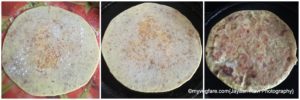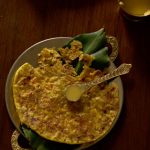A very Happy Yugadi / Ugadi / Gudi Padwa to all my dear Readers, friends and family. Hope the New year brings you all the best in life.
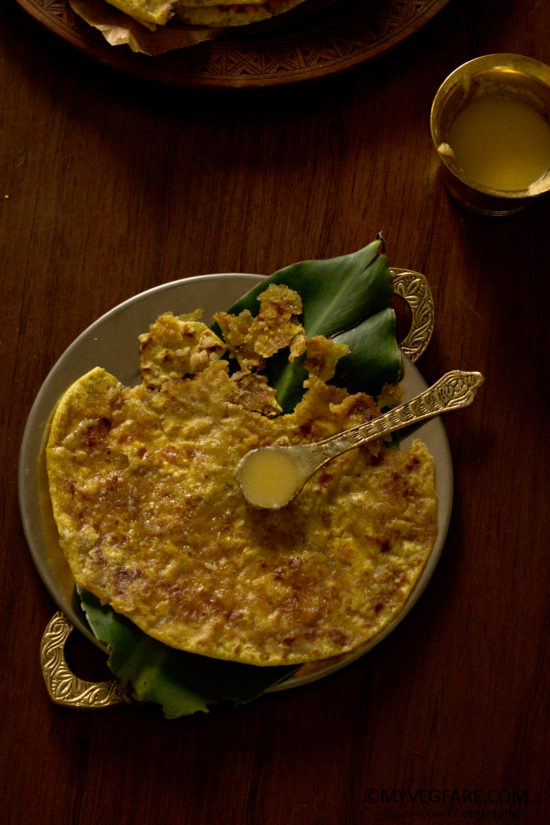
Obattu / Holige / Puran Poli is a sweet flat bread made during festivals, in south of India. It’s a very traditional Indian Sweet.
It is not just made for festivals but also is made in weddings, House-warming and many more auspicious ceremonies. This flat bread is made by making a sweet filling which is covered by dough and flattened into circles and cooked on a tawa and roasted on both the sides using oil or ghee.
It is not just made for festivals but also is made in weddings, House-warming and many more auspicious ceremonies. This flat bread is made by making a sweet filling which is covered by dough and flattened into circles and cooked on a tawa and served hot with a dollop of ghee! Yum Yum…
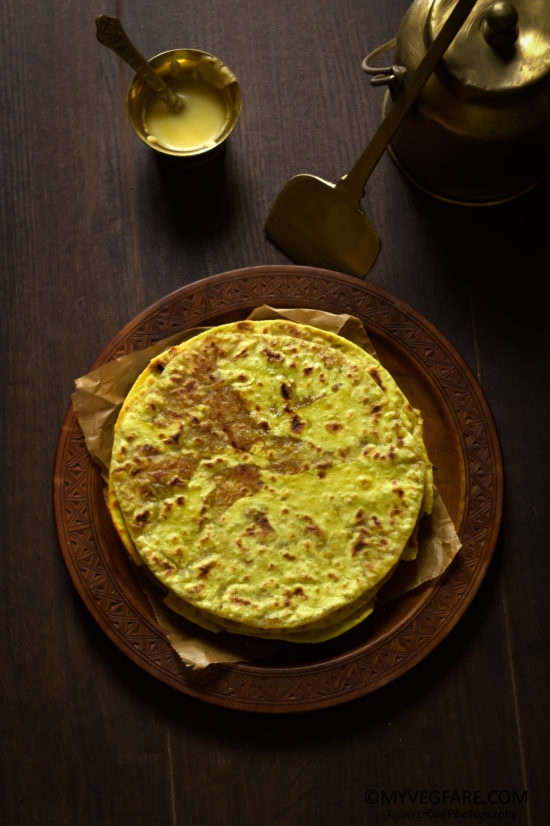
The Name Yugadi or Ugadi is derived from the Sanskrit word Yuga means Age, Adi means Beginning. According to the Lunar calendar of Hindus, the New year begins or falls on the Chaitra Shudhdha Paadya or the first day of the first Indian month Chaitra. This generally falls in the month end of March or beginning of April according to the Hindu calendar. People of Karnataka, Andhra Pradesh and Maharashtrians celebrate this festival.
In Karnataka, traditionally we prepare Obattu / Holige which is usually prepared with Daal, either Channa or Tuvar and is also made with coconut. We also make Holige saaru using some of the filling / Hoorna and tastes awesome. I just for a change made it with Poha / Avalakki as I had some Red Poha left over and as it was too little I used it to make this sweet. It didn't make much difference and tasted very well and my family loved it!
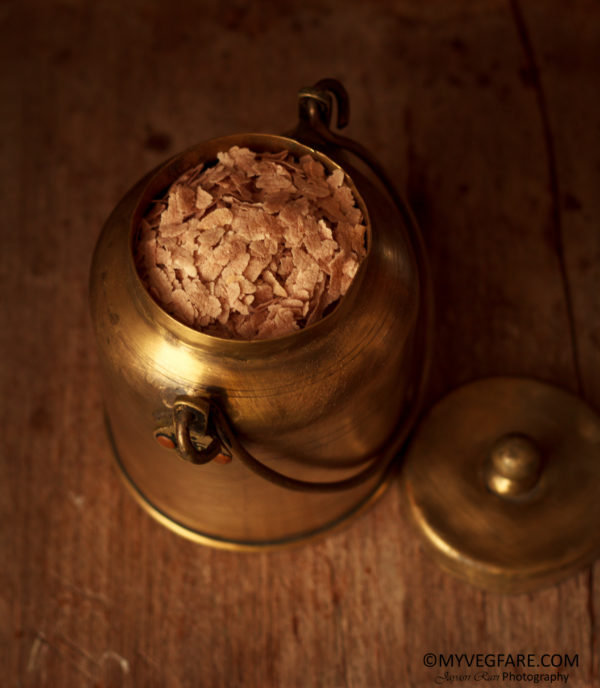
Obattu brings back memories and it's so nostalgic when I think about it. Every festival especially these big festivals like Sankranthi, Ugadi, Deepavali my Mum was very particular that we should wear new dresses. My sister stitches very well, a poor girl every festival she had to stitch 3 (dresses) she used to start stitching a fortnight back but wouldn’t finish until the day! she would sometimes sit and stitch all through the night! For us to wear on the festival day! when I think about it now I feel so sorry for her.
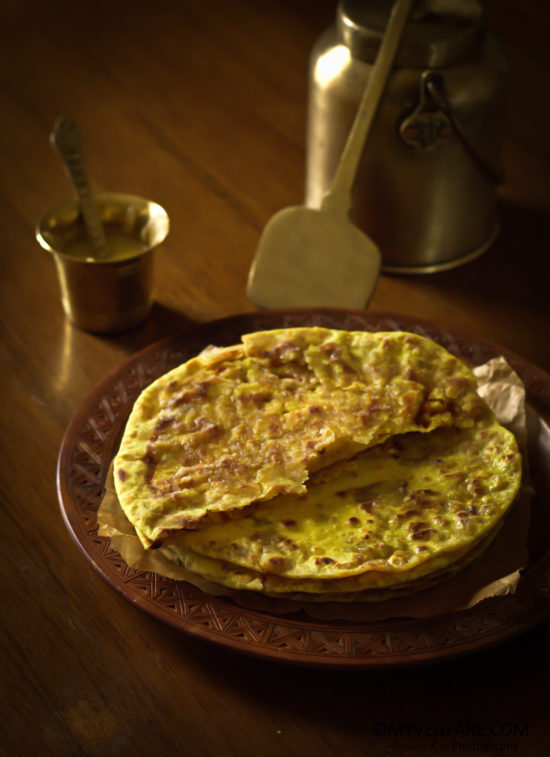
We had to get up very early in the morning, I used to draw Kolam (Rangoli), a free hand drawing in front of the house, It was my duty! And help amma in cooking! My youngest sister was the tomboy she used to take her honda and do all the shopping with my dad! It was such fun, first thing amma would do is make the Kanaka (outer covering for the Poli ) as it needs time to soak. A good 3 to 4 hrs soaking helps in the dough to soften up and stretch very well. So, end of the story, if you are planning to make Poli soak the dough early in the morning and after you finish all other dishes make obattu in the end!
Let’s see how to make this sogasu obattu or Avalakki obattu…,
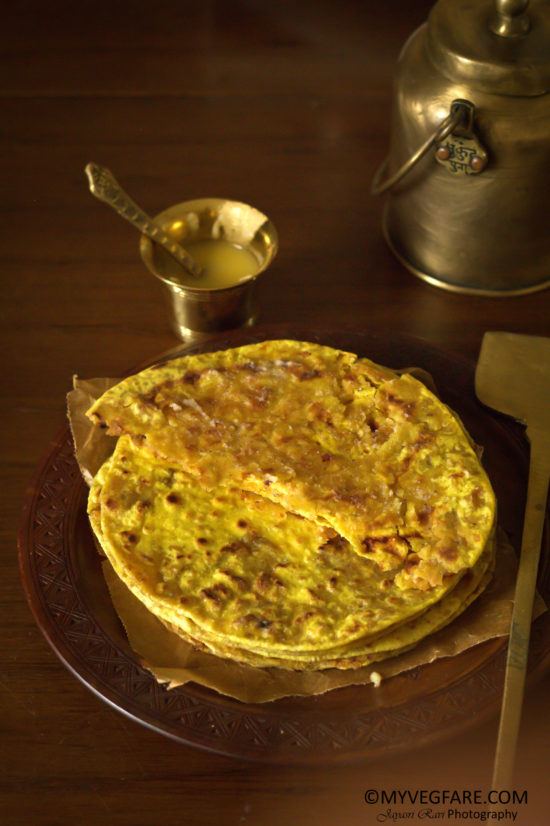
Obattu / Holige / Puran Poli with Avalakki (Poha) - Ugadi Recipe - A Traditional Sweet Flat Bread From South India)
Ingredients
For Covering
- 1/2 cup Chiroti rava
- 1/2 cup Maida
- 1/4 to 1/3 cup oil
- 1/4 tsp salt
- 1 tsp turmeric powder
- Water as required to make the dough
For Stuffing / Filling (Hoorna / Poorna)
- 1/2 Cup Red Poha / Avalakki
- 1/2 cup freshly grated coconut
- 1 cup Jaggery
- 1/4 tsp cardamom powder
- Maida for dusting (optional)** check notes
Instructions
- Take equal quantity of Chiroti Rava and Maida with a tsp of turmeric and oil, a little salt mix everything together then start adding water to make it into a soft dough. Let the dough bit sticky softer than chapati dough. Knead it very well for at least 5 minutes using one or two tsp of oil if it gets sticky, soak it with the remaining oil and leave it for 3 to 4 hours covered.

- Now let’s make the filling. Take Red Poha in a bowl wash it well and soak it for 10 to 20 minutes hour it becomes soft mash it well, take equal quantity of grated coconut and grind it to almost a smooth paste don't grind it too much as coconut gives out water mix both together and keep aside. Otherwise, you can grind poha, coconut and jaggery all together to a paste.
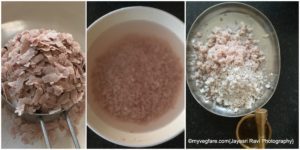
- I have used 1 cup of Jaggery (you can adjust Jaggery to your liking) but don’t reduce it too much, for two things one you won’t get the consistency of the dough as jaggery helps in binding it properly and the taste becomes little bland and won’t be interesting to eat.
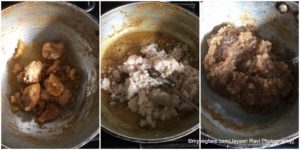
- Take powdered jaggery in a kadai, add ¼ cup of water for it to dissolve, once it completely dissolves filter it through a strainer to remove the impurities, then return it back to the kadai once it starts boiling add the poha mixture into it and start mixing it well enough so it gets completely combined and allow it cook in a medium to low flame for few minutes, keep stirring in intervals so that it doesn’t get burnt and everything comes to one whole non sticky mass. Don’t make it too dry that spoils the consistency. Hoorna/Poorna is now ready. add one or two tbsp of ghee and leave it to cool down.
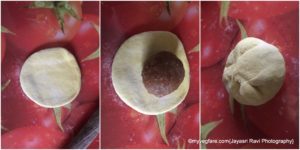
- Take the dough and knead it very well with the help of oil, oil helps in stretching the dough like an elastic. Now the dough is ready to make the poli. Make small balls of the filling and covering as shown in the figure. The covering dough should be half the size of the stuffing.
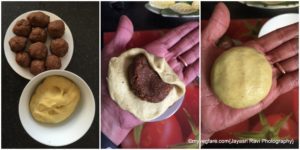
- Take grease proof foil or Banana leaf or some foil which can withstand the heat, spread some oil on it then take the stuffed poli and flatten it using your fingertips into a nice round.
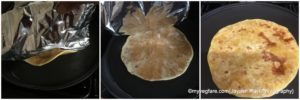
- Heat a tawa transfer the flattened poli on to it by slowly realising it cook on both the sides, drizzle oil around. Brushing oil flip and cook on both the sides. Once done serve it with a dollop of ghee, serve it hot!
